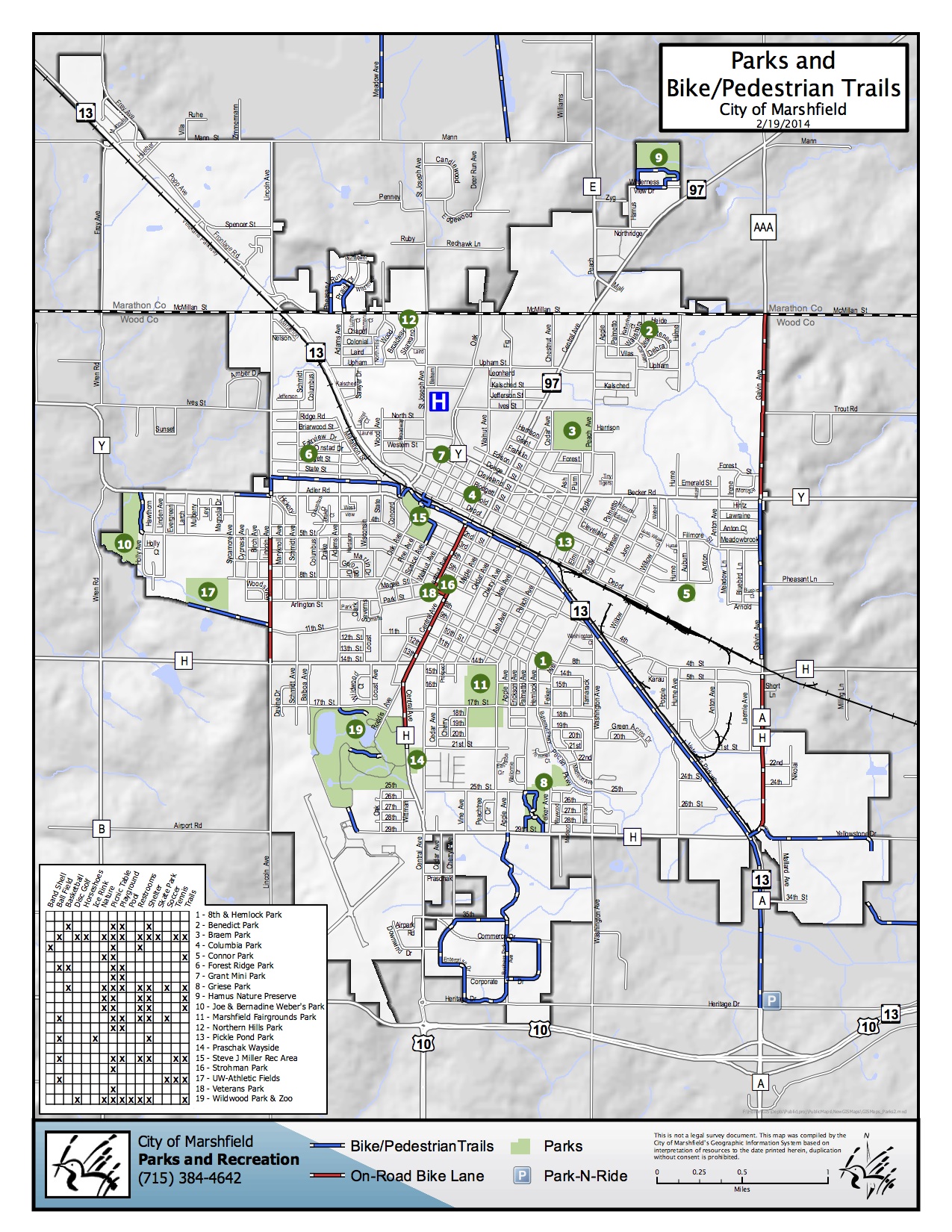

In 1872 the Wisconsin Central built the first line through town. The late 1800s saw a burst of railroad building. The city ruled that buildings on Central should henceforth be built from brick, even though Marshfield had been largely built on wealth generated by lumber. Neighbors in Stevens Point, Spencer and Wisconsin Rapids sent trainloads of supplies. The next day, Upham announced he would rebuild his businesses. When it was over, 250 buildings were destroyed, but no lives were lost. Men tried to stop the inferno, even dynamiting stores to create a fire break, but the updraft lifted embers and dropped them onto more buildings. The fire spread, consuming the sawmill and flour mill, and headed south into homes and the business district.

On June 27, after a dry three weeks, fire broke out among the drying piles in the Upham mill's lumberyard, ignited by a spark from a train. In 1887, a fire started and got out of control. By 1885 the population exceeded 2,000, ranging from the Uphams in their fine Italianate homes to laborers living in shacks along the railroad. Other businesses started, too: an alcohol factory, hotels, saloons, stores, newspapers, blacksmith, and a milliner. By 1885 he had added a general store, a planing mill, a furniture factory and a flour and feed mill. Upham, a " Yankee" migrant of English descent from Massachusetts and later governor of Wisconsin, built a sawmill near the railway, with a millpond. The first industry was a stave and spoke factory located near the railroad. Marshfield might also have been named after Marshfield, Massachusetts, since the Wisconsin Central Railway was financed with money from Massachusetts and other stops along the WC's line were named after towns in Massachusetts, including Amherst, Medford and Chelsea. Marsh, one of the original owners of land in the area. That crude building between the stumps was the first permanent structure in Marshfield. They built a two-room log hotel at what is now the corner of Depot and Chestnut streets, with bunks in the west room and tables, benches, bar and store in the east room. At the railroad's request, Louis Rivers, his wife and child, and his brother Frank came to the area and started cutting an opening in the forest. The railway needed a supply depot between those two towns, and Marshfield was about midway. In 1872 the Wisconsin Central Railway was building the leg of its line from Stevens Point through the forest to what would become Colby, heading north for Lake Superior. The first building at Marshfield came in 1872. A sawmill was built at Neillsville around 1847. DuBay started his trading post 40 miles (64 km) east on the Wisconsin River around 1818. Marshfield was settled much later than many surrounding towns. There are no improvements in this Township. The streams are lined with Alder & many of them producing good hay. The Township is well watered with small streams but none of them are of sufficient size for Milling purposes. There is some good Pine it but to much scattering to make it an object. The surface is rough & uneven(?) and rather to flat for anything but meadow. Particularly that part which contains Fir & Hemlock. This Township is nearly all Dry land, There being no Swamp of consequence in it. When done, the deputy surveyor filed this general description: government marked all the section corners in the 6 by 6 miles (9.7 by 9.7 km) square which now includes Marshfield, Hewitt, and Cameron, working on foot with compass and chain. In 18, when the area was still forested, surveyors working for the U.S. In 2010, Marshfield was ranked 5th in a list of "The Best Small Cities to Raise a Family" compiled by Forbes magazine. Marshfield is home to the Marshfield Clinic, a large healthcare system that serves much of Central, Northern, and Western Wisconsin. The portion of the city in Marathon County is part of the Wausau Metropolitan Statistical Area. The city is part of the United States Census Bureau's Marshfield-Wisconsin Rapids Micropolitan Statistical Area, which includes all of Wood County (2020 population: 74,207). Of this, 18,119 were in Wood County, and 810 were in Marathon County. The largest city in Wood County, its population was 18,929 at the 2020 census. It is located at the intersection of U.S.

Marshfield is a city in northwest Wood and southwest Marathon counties in the U.S.


 0 kommentar(er)
0 kommentar(er)
